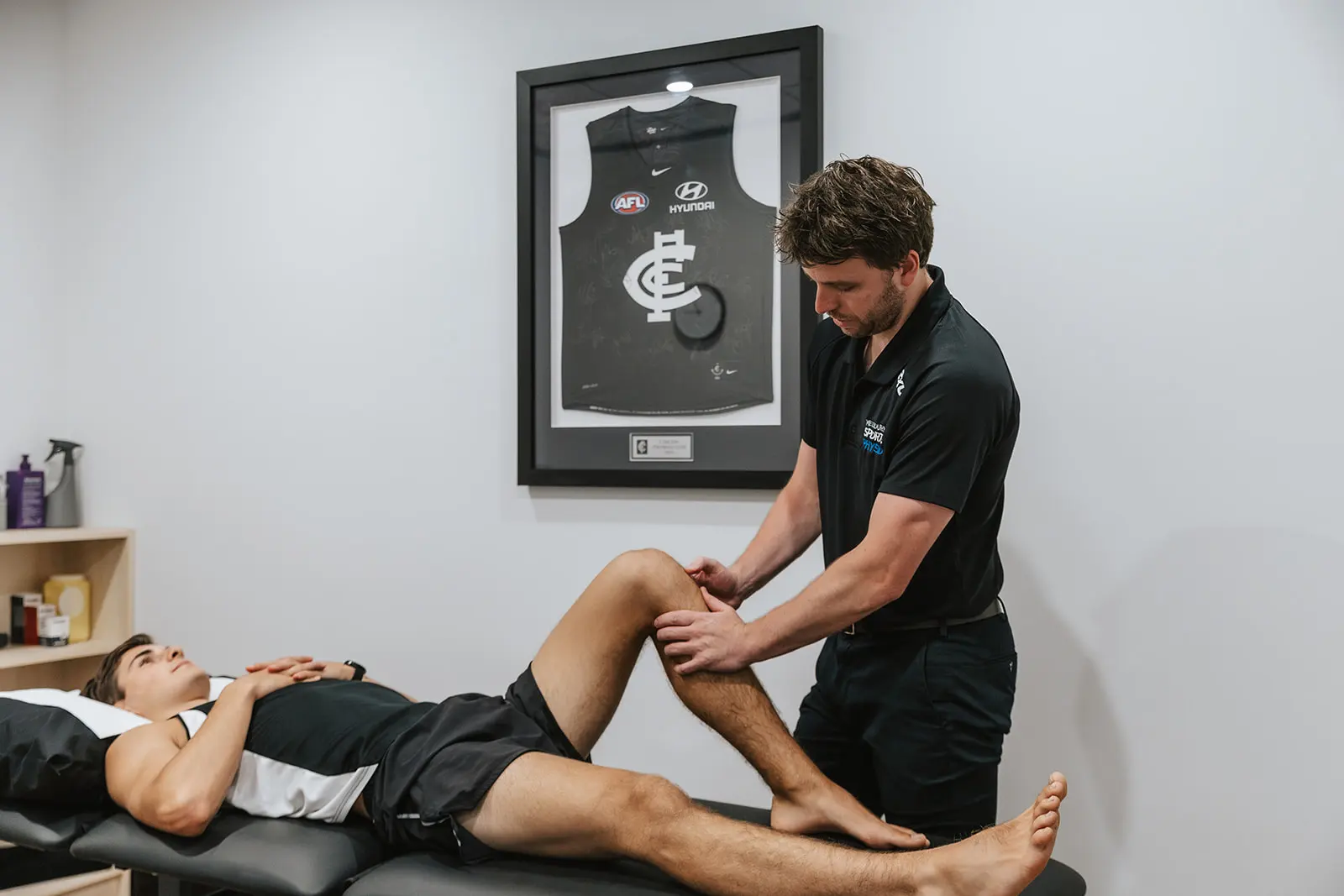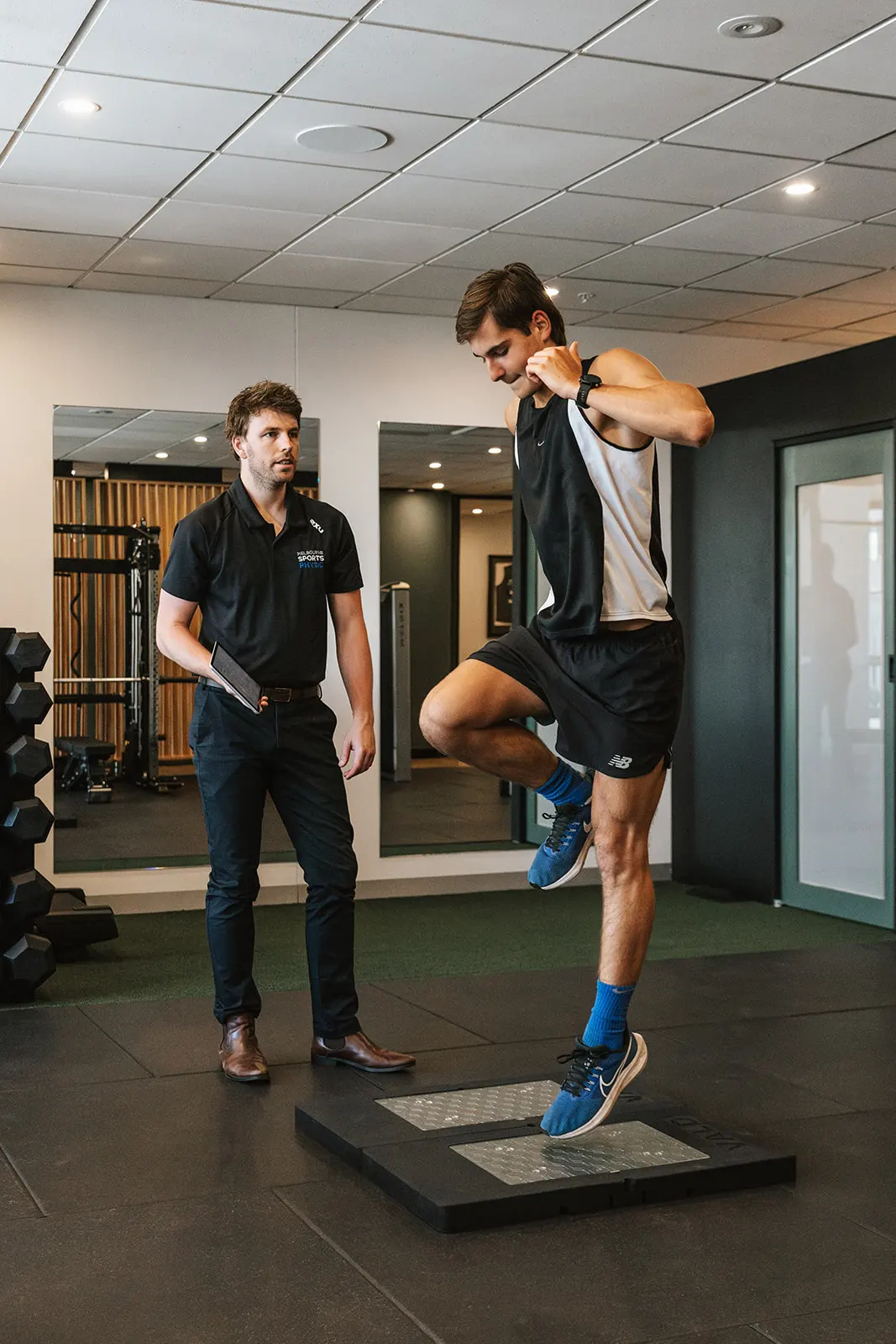May 2025
Shaun Rodgers, Physiotherapist
ACL Reconstruction Recovery Time: How a Sports Physiotherapist Guides You from Injury BACK TO SPORT in Melbourne
“I’ve had my ACL reconstructed — now what?”
“Can I trust my knee again?”
“Is this pain normal?”
“When will I run again?”
If you’ve asked these questions, you’re not alone. ACL (anterior cruciate ligament) injuries are a defining moment in many athletes’ lives — and not just elite professionals. From weekend warriors to young athletes, tearing the ACL is a physically and emotionally demanding experience.
But recovery from ACL surgery isn’t just about waiting for healing. It’s a highly structured process, and success largely depends on the role of physiotherapy — not just after surgery, but before it too.
In this guide, we’ll break down the ACL reconstruction recovery timeline, explore the science of healing, and focus on the critical role sports physiotherapists play in both pre-op and post-op phases.
Understanding ACL Injuries and Surgery in Melbourne
The ACL is one of four major ligaments stabilising the knee, preventing forward movement of the tibia (shinbone) relative to the femur (thighbone). A complete tear, especially in athletes or those with high physical demands, often leads to reconstruction using a graft (typically hamstring, patellar tendon, or quadriceps tendon).
Surgery, however, is just the beginning. The real challenge is restoring strength, function, confidence — and ultimately returning to sport or active living.
What our clients are saying about us
ACL Recovery Timeline in Melbourne: What to Expect
Recovery from ACL reconstruction typically takes 9 to 12 months, but the quality and individualisation of rehab are more important than the clock. It's super important that you don't follow an ACL recipe!
Here’s a general breakdown:
|
Time Post-Surgery |
Recovery Milestone |
|---|---|
|
0–2 weeks |
Swelling control, regain knee extension, walking with support |
|
2–6 weeks |
Improve range of motion, basic strengthening, balance |
|
6–12 weeks |
Weight-bearing strength, light cardio, proprioception |
|
3–6 months |
Running, agility drills, sport-specific movement |
|
6–9 months |
Return-to-sport assessments, neuromuscular training |
|
9–12+ months |
Full return to sport (if strength and functional goals are met) |
📢 Important: The graft may appear healed early on, but ligamentisation (graft maturity) can take 12+ months. Premature return to sport increases risk of re-tear by 3x.
ACL Prehab: The Underrated Phase Before Surgery
Why Prehabilitation Matters
"Prehab" refers to pre-surgical physiotherapy, aiming to optimise knee function before reconstruction. Research shows patients who engage in prehab:
-
Recover faster post-surgery
-
Regain greater range of motion
-
Have better quadriceps strength
-
Experience fewer complications
Prehab Goals
A sports physiotherapist will help you:
-
Reduce swelling and pain
-
Restore full knee extension (critical!)
-
Regain quadriceps control
-
Maintain cardiovascular fitness
-
Educate you about post-op expectations
ACL surgeries are more successful when the knee is “quiet” before going under the knife — that is, minimal swelling, good ROM, and muscle control. It sets the stage for a smoother and more efficient recovery.
Post-Op ACL Physio: Your Guide Through the Maze
Post-operative physiotherapy is not just about exercises — it’s a carefully guided return to movement, function, and confidence. A skilled sports physiotherapist personalises every phase based on your:
-
Surgery type
-
Graft choice
-
Sport goals
-
Psychological readiness
Here’s how physios guide each stage:
Weeks 0–6: Protect & Mobilise
-
Pain and swelling management (ice, elevation, compression)
-
Restore knee extension (priority #1)
-
Gentle flexion (bending) range of motion
-
Patellar mobility (reduces scar tissue risk)
-
Quadriceps reactivation (e.g. isometrics, electrical stimulation)
-
Walking with crutches → progressing to independent gait
🚩 Neglecting extension early is one of the most common mistakes and can lead to long-term issues like knee stiffness and gait dysfunction.
Weeks 6–12: Build Strength & Control
-
Resistance exercises (e.g. squats, step-ups, bridges)
-
Balance and proprioception drills (e.g. wobble boards)
-
Stationary cycling, pool therapy
-
Begin light jogging depending on protocol
This is a crucial neuromuscular adaptation phase. A physio ensures you're not compensating with other muscles (like hip flexors) and that you're rebuilding symmetrical strength.
3–6 Months: Power, Agility & Movement Prep
-
Plyometric drills (e.g. jumping, hopping)
-
Sport-specific drills (e.g. cutting, pivoting)
-
Acceleration and deceleration control
-
Return-to-running protocols
Progressions here depend on objective strength testing. You’ll typically need 90%+ limb symmetry in quadriceps and hamstrings compared to the uninjured side before clearance for advanced drills.
6–12 Months: Return to Play (RTS) Decision Making
This stage is often mishandled — too many athletes rush back. Your physiotherapist ensures:
-
Completion of return-to-sport test battery:
-
Single-leg hop tests
-
Isokinetic strength tests
-
Agility and reaction drills
-
-
Psychological readiness assessments (fear of reinjury matters!)
-
Reconditioning for sport demands (not just daily life)
Even if you feel ready, testing must confirm it. A 2022 meta-analysis in British Journal of Sports Medicine found athletes who passed strict RTS criteria had nearly 50% lower reinjury risk.
Beyond the Timeline: Common Misconceptions
❌ “You’ll be back in 6 months”
False. While graft healing may be complete by then, the knee’s neuromuscular system and functional capacity may lag behind. Even elite athletes often wait 9–12 months to return safely.
❌ “Physio is just exercises”
A sports physiotherapist provides:
-
Functional assessments
-
Manual therapy (when appropriate)
-
Pain science education
-
Mental support
-
Movement analysis
-
Long-term injury prevention
This is a partnership, not a protocol.
Book Online Now to Fix Your Body
❌ “I don’t need prehab if I’m getting surgery soon”
Wrong again. Even 2–3 weeks of focused prehab can dramatically improve post-op outcomes.
📚 What Most ACL Blogs Don’t Tell You
Let’s go beyond the usual bullet points:
-
ACL grafts are weakest at 6–12 weeks, even if you feel stronger. Your physio knows how to scale loading safely.
-
Quadriceps atrophy can persist for years if not properly addressed.
-
Your uninvolved leg loses strength too — your physio will train both.
-
Proprioception (joint awareness) doesn't automatically return — it must be retrained.
-
Fear of reinjury (kinesiophobia) can delay recovery more than physical deficits. A physio helps manage this too.
Final Thoughts: Physiotherapy is Your Long-Term Partner
ACL reconstruction is not a “fix it and forget it” surgery. It’s the beginning of a carefully guided process that spans months, even a year — and your sports physiotherapist is your greatest ally in this journey.
From prehab to power drills, from emotional slumps to functional peaks, physio is the constant. They don’t just rehabilitate your knee — they rebuild your trust in movement.
✅ Are you recovering from ACL surgery?
✅ Are you preparing for it?
✅ Are you unsure about what phase you're in?
👉 Don’t guess — consult a qualified sports physiotherapist today. The difference between a 6-month frustration and a 12-month transformation could be one smart decision.
🔁 Recap & Calls to Action
-
Prehab matters — don’t skip it.
-
Recovery isn’t just time-based — it's milestone-driven.
-
Physio is essential — not optional.
-
Graft healing ≠ readiness to play.
-
Return to sport testing saves careers.
👉 Book an assessment with a sports physiotherapist who specialises in ACL rehab.
👉 Share this article with anyone facing ACL surgery — it could change their recovery trajectory.
How can we help you?
At Melbourne Sports Physiotherapy our goal is to get you moving pain free as soon as possible.
But, we also want you to actually move better and live a healthier, more active and fulfilling life!
If your sports, fitness training or work has been wearing your body down, book in with one of our expert massage therapists so we can help you reduce your pain or stiffness.
If you are showing some signs of this condition or simply want help prevent this from happening in the future then book in with one of our highly experienced Remedial Massage Therapists today!
You can make an appointment by calling or booking online.



